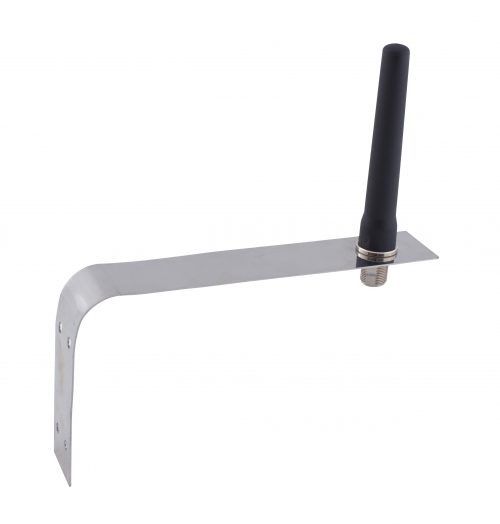169 MHz ISM band antennas – a reality check!
169 MHz frequency band
The advent of the EU harmonized ISM band at 169 MHz offers utility businesses a viable alternative to using higher frequencies for wireless metering by using 169 MHz ISM band antennas. Using the 169 MHz VHF frequency band, wireless technology can be deployed for longer range applications at relatively low power due to the low frequency of operation. This has many advantages for operations and billing departments.
Challenge
The challenge however comes with specifying 169 MHz ISM band antennas to go with the wireless meters. There are already a number of ISM-band 169 MHz module and terminal vendors on the market and I am sure there are more in development. An interesting example of a terminal/gateway supplier is Meterlinq. From a RF perspective the module/terminal is relatively straightforward, but to supply compact, discreet antennas is not as easy.
A wavelength at 169 MHz is approximately 1.8M in length and therein lies the problem, for even a 1/4 wave monopole would be half a metre in length once the antenna has been housed in a protective sheath and connectorized.
For metering applications in domestic environments, discreet, tamper-proof antennas that cannot be easily damaged are desirable, but not only is making a very low profile 169 MHz hard to achieve, it would also need a large groundplane to function correctly. This is not straightforward on a small-sized utility meter with little metal real estate. The viable options really are to use a 1/4 wave 169 MHz helical antenna either bulkhead mounted with a RF connector or a through-hole mounted antenna (the link shows a through-hole mounted antenna on a bracket) so the antenna cannot be unscrewed from the meter. Both options would be approximately 120mm in overall length and would ideally need a minimum groundplane size of 85mm x 85mm. This size of groundplane could be possible on most meters, but a larger groundplane required by lower profile antennas are more than likely not going to be possible.
Concentrator applications
For concentrator applications (where a number of remote meters communicate with a hub using VHF communications), a wall-mount 169 MHz antenna might come in useful. Designed for outdoor use, ideally these will be of fibreglass construcion to withstand the elements.
It is also important to be wary of very small 169 MHz antennas as invariably some parameter will be compromised, for example small 169 MHz PCB antennas with a gain of -17.6 dB. It is useful to remember that the laws of physics are not going to change and that the wavelength is always going to be 1.8M. Very small antennas are going to massively compromise RF performance, defeating the very object of the exercise.
169 MHz ISM band antennas – a summary
In conclusion, the 169 MHz band is a real opportunity for wireless metering and related applications, however the selection of 169 MHz ISM band antennas and design-in for the meter must be considered early and with the appropriate level of planning to ensure that a suitable antenna design can be accommodated by the meter in terms of available groundplane etc. without comprising performance or aesthetics.
Related links:
Design your own antenna with our Antenna Configurator
Please note: This article was first published on the Specialist Antennas blog and we have updated and enhanced for this issue.

